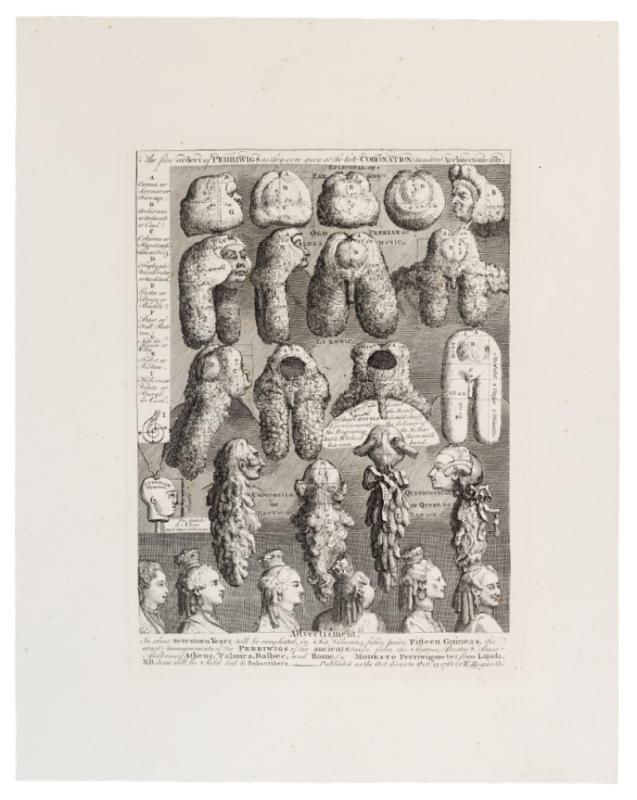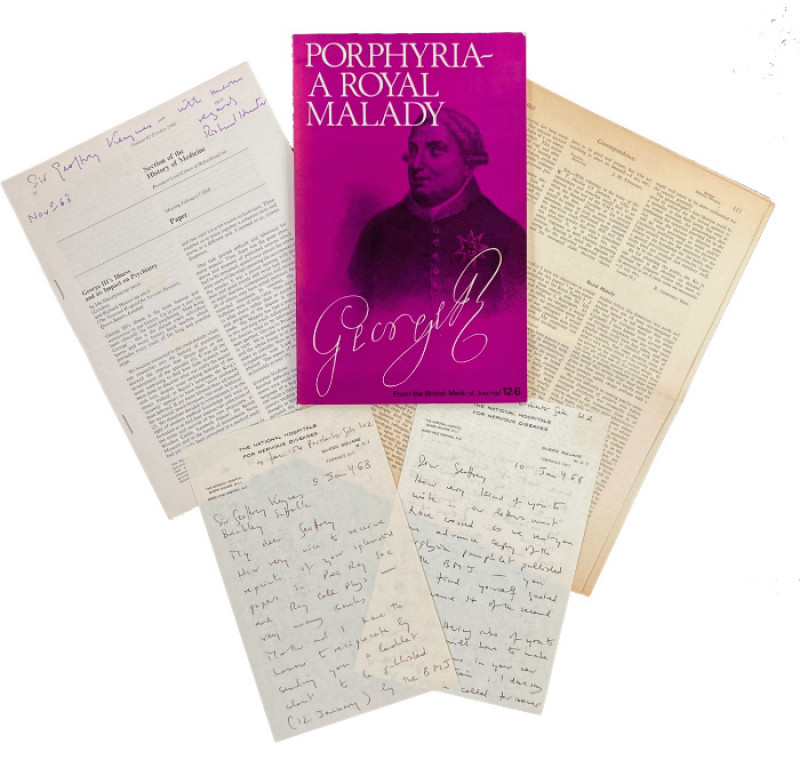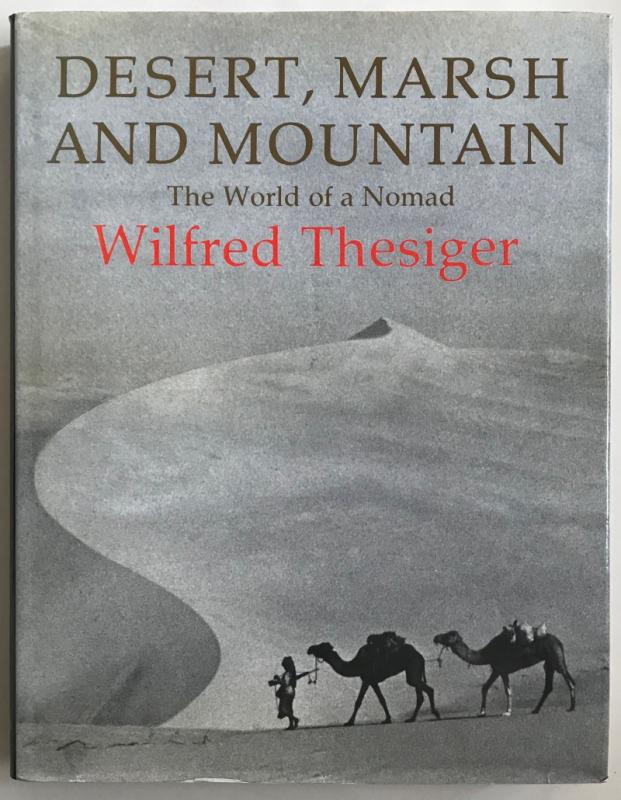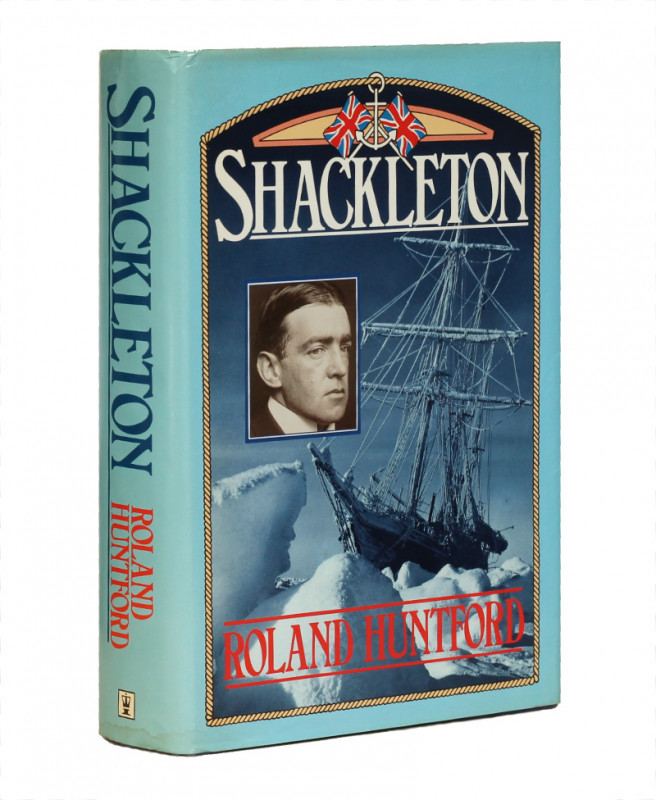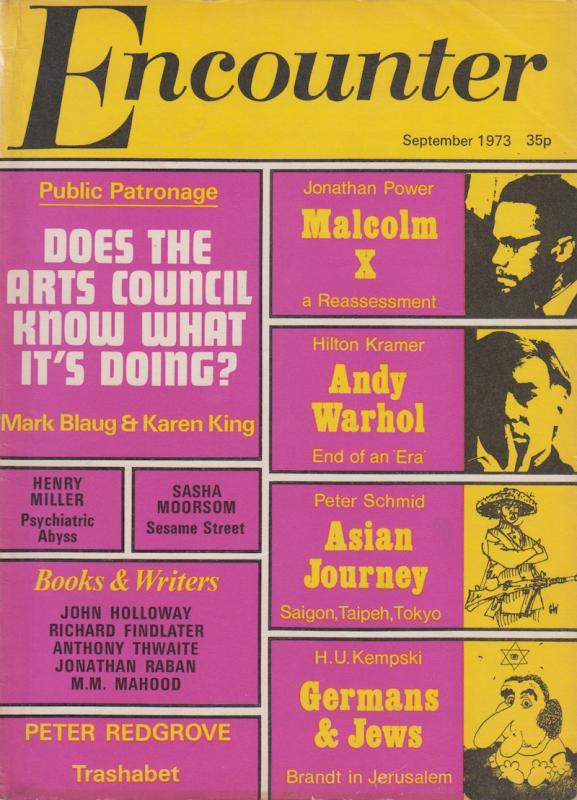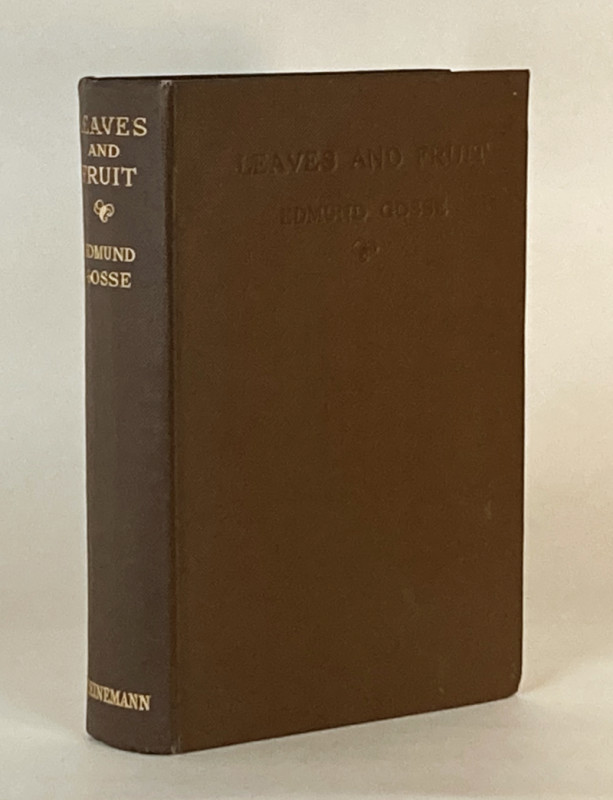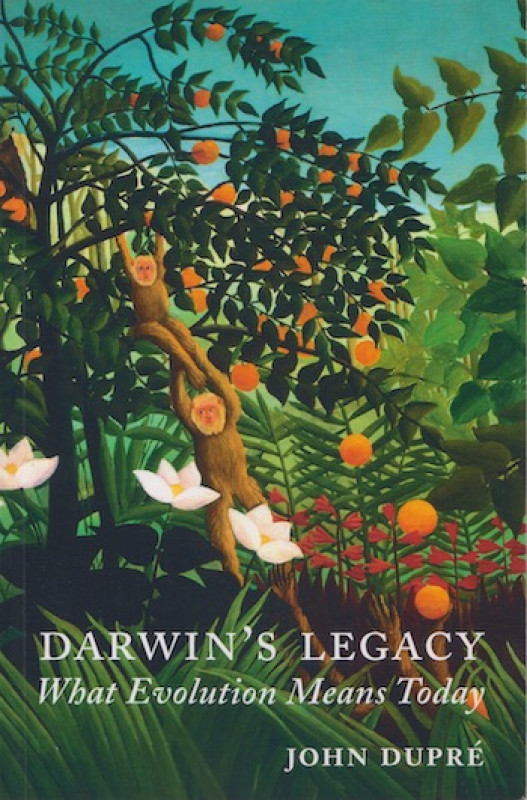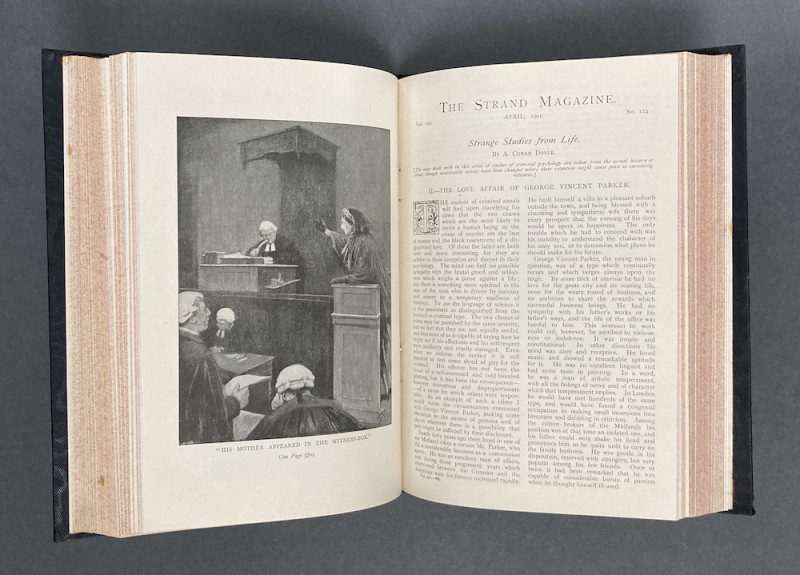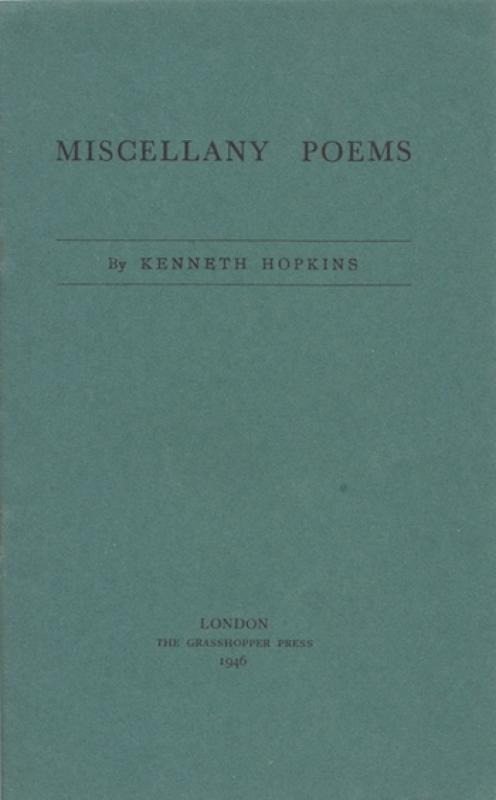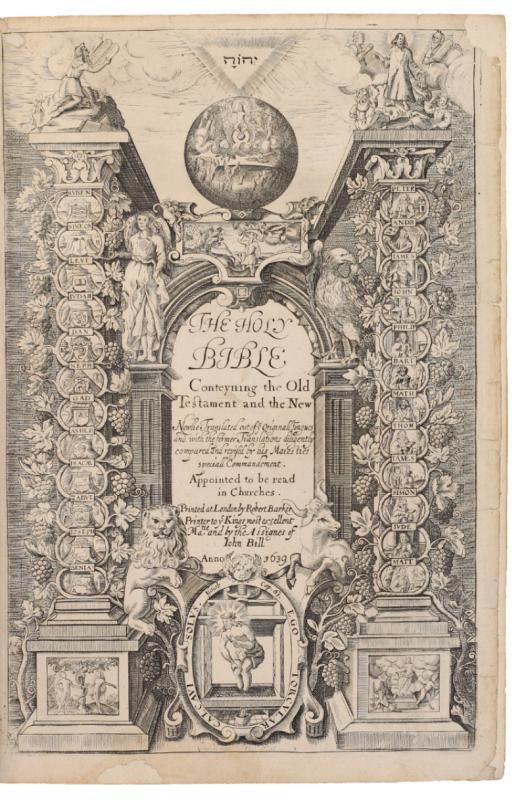‘The Five Orders of Perriwigs [i.e. Periwigs] as they were Worn at the Late Coronation, Measured Architectonically’
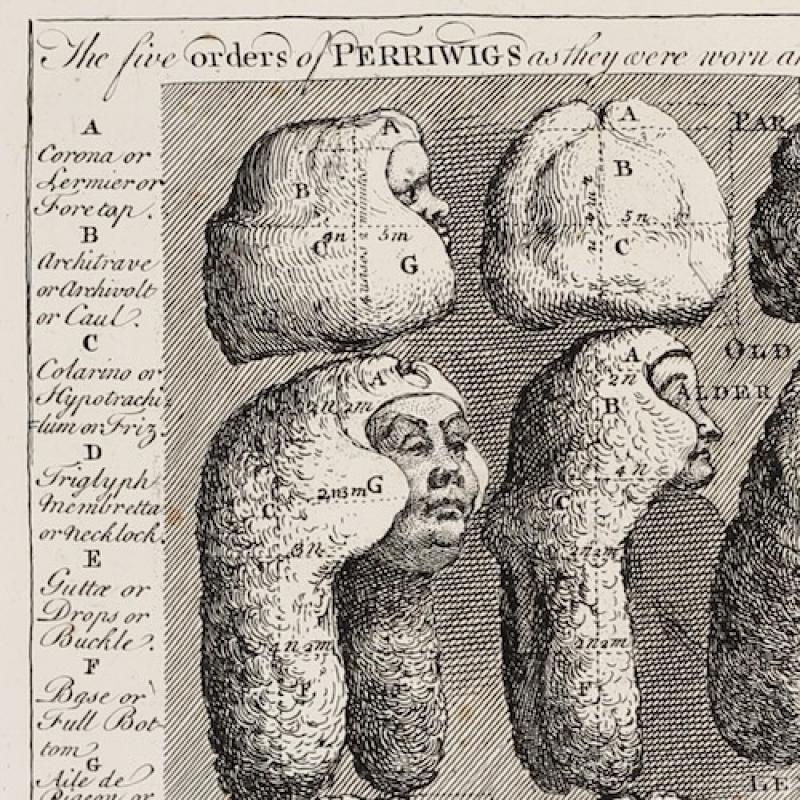
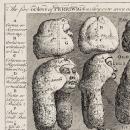
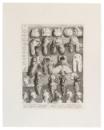
Book Description
HOGARTH’S SYSTEMATIC TAXONOMY OF WIGS, WHICH SATIRISED BOTH CONTEMPORARY FASHIONS AND THE ARCHITECTURAL WORKS OF ‘ATHENIAN’ STUART, ROBERT WOOD, ET AL.
Etched and engraved print on unwatermarked wove paper after Hogarth (platemark: 303 x 223mm; sheet: 435 x 343mm). (Scattered, very light spotting, traces of historic mounts on one margin of verso.) A crisp impression with broad margins. ¶¶¶
Etched and engraved print on unwatermarked wove paper after Hogarth (platemark: 303 x 223mm; sheet: 435 x 343mm). (Scattered, very light spotting, traces of historic mounts on one margin of verso.) A crisp impression with broad margins. ¶¶¶
Dealer Notes
Third state, likely issued by Boydell. The painter and engraver William Hogarth (1697-1764) was unable to study at university or train in a profession due to the debts his father accrued in failed attempts to publish Latin and Greek textbooks and establish a Latin-speaking coffeehouse in London. Therefore, Hogarth was apprenticed to the silver-plate engraver Ellis Gamble from circa 1714 onwards and in 1720 he set up as a copper-engraver, the same year in which he enrolled at the St Martin’s Lane Academy. In 1724 Hogarth joined James Thornhill’s drawing school in Covent Garden and his marriage to Thornhill’s daughter Jane in 1729 opened up new commissions and opportunities for him. In the early 1730s he had much success as a painter of conversation pieces and also developed his ‘modern moral subjects’ – ‘pictorial narratives of contemporary-life subjects in series’ (ODNB) – which famously included A Harlot’s Progress (the engravings of the paintings published by subscription in 1732) and A Rake’s Progress (completed 1734). The later 1730s and 1740s saw Hogarth’s establishment as a portraitist, and eventually he would be named the ‘father of British painting’ (ODNB).
Hogarth is perhaps still best known for the satires on contemporary society, fashions, and events that established his fame from 1721 onwards, such as this engraving, ‘The Five Orders of Perriwigs’, which was inspired by the coronation of King George III and Queen Charlotte in September 1761. This was the first British coronation since that of George III’s grandfather more than 30 years earlier and many of the attendees competed to be among the best or most elaborately dressed at the ceremony. Hogarth applied his satirist’s eye to this display of contemporary fashions, and responded with a taxonomy of wigs, employing architectural terminology to identify five ‘orders’ of wigs: ‘Episcopal or Parsonic’, ‘Old Peerian or Aldermanic’, ‘Lexonic’, ‘Composite or Half Natural’, and ‘Queerinthian or Queue de Renard’, which are supplemented by a sixth order of women’s wigs (Doric, Ionic, Corinthian, Tuscan, and Composite, the five classical orders of architecture, were most readily distinguished by the capitals at the head of columns).
This analogy was partially inspired the trend for analytical works on classical architecture – such as Robert Wood’s The Ruins of Palmyra (1753) and The Ruins of Balbec (1757) – and by the recent advertisements for James ‘Athenian’ Stuart and Nicholas Revett’s The Antiquities of Athens Measured and Delineated. The Antiquities of Athens was widely promoted in the years prior to its much-delayed publication in three volumes between 1762 and 1794, and Hogarth’s ‘Advertisement’ at the foot of the engravings claims that in ‘about seventeen years will be completed, in six volumes, folio, price fifteen guineas, the exact measurements of the perriwigs of the ancients; taken from the statues, bustos & baso-relievos of Athens, Palmira, Balbec, and Rome, by: Modesto perriwig-meter from Lagado’. In pursuit of ‘exact measurement’, Hogarth provides a solemn guide of mensuration, based on a head closely resembling Stuart’s, which is captioned ‘Athenian Measure’ and surmounted by an inverted pair of dividers. From this are derived units of measurement: ‘One Nodule / 3 Nasos / Each Naso 3 Minutes’.
This is the third of three states of the print identified by Paulson, with the inserted superscript ‘e’ above ‘Advertisement’ and the letter ‘k’ at the end of ‘Parsonic’ burnished out. This plate is on unwatermarked wove paper with broad margins, and is likely to have been issued by John Boydell between 1790 (after his purchase of the original printing plates) and their sale at auction in 1818.
BM, Political and Personal Satires, no. 3812; R. Paulson, Hogarth’s Graphic Works (1989), no. 209 (state 3/3).
Hogarth is perhaps still best known for the satires on contemporary society, fashions, and events that established his fame from 1721 onwards, such as this engraving, ‘The Five Orders of Perriwigs’, which was inspired by the coronation of King George III and Queen Charlotte in September 1761. This was the first British coronation since that of George III’s grandfather more than 30 years earlier and many of the attendees competed to be among the best or most elaborately dressed at the ceremony. Hogarth applied his satirist’s eye to this display of contemporary fashions, and responded with a taxonomy of wigs, employing architectural terminology to identify five ‘orders’ of wigs: ‘Episcopal or Parsonic’, ‘Old Peerian or Aldermanic’, ‘Lexonic’, ‘Composite or Half Natural’, and ‘Queerinthian or Queue de Renard’, which are supplemented by a sixth order of women’s wigs (Doric, Ionic, Corinthian, Tuscan, and Composite, the five classical orders of architecture, were most readily distinguished by the capitals at the head of columns).
This analogy was partially inspired the trend for analytical works on classical architecture – such as Robert Wood’s The Ruins of Palmyra (1753) and The Ruins of Balbec (1757) – and by the recent advertisements for James ‘Athenian’ Stuart and Nicholas Revett’s The Antiquities of Athens Measured and Delineated. The Antiquities of Athens was widely promoted in the years prior to its much-delayed publication in three volumes between 1762 and 1794, and Hogarth’s ‘Advertisement’ at the foot of the engravings claims that in ‘about seventeen years will be completed, in six volumes, folio, price fifteen guineas, the exact measurements of the perriwigs of the ancients; taken from the statues, bustos & baso-relievos of Athens, Palmira, Balbec, and Rome, by: Modesto perriwig-meter from Lagado’. In pursuit of ‘exact measurement’, Hogarth provides a solemn guide of mensuration, based on a head closely resembling Stuart’s, which is captioned ‘Athenian Measure’ and surmounted by an inverted pair of dividers. From this are derived units of measurement: ‘One Nodule / 3 Nasos / Each Naso 3 Minutes’.
This is the third of three states of the print identified by Paulson, with the inserted superscript ‘e’ above ‘Advertisement’ and the letter ‘k’ at the end of ‘Parsonic’ burnished out. This plate is on unwatermarked wove paper with broad margins, and is likely to have been issued by John Boydell between 1790 (after his purchase of the original printing plates) and their sale at auction in 1818.
BM, Political and Personal Satires, no. 3812; R. Paulson, Hogarth’s Graphic Works (1989), no. 209 (state 3/3).
Author
HOGARTH, William
Date
[c. 1790-1818]
Publisher
[London]: ‘Octr. 15. 1761 ... W: Hogarth’ [?but John Boydell]
Friends of the PBFA
For £10 get free entry to our fairs, updates from the PBFA and more.
Please email info@pbfa.org for more information
